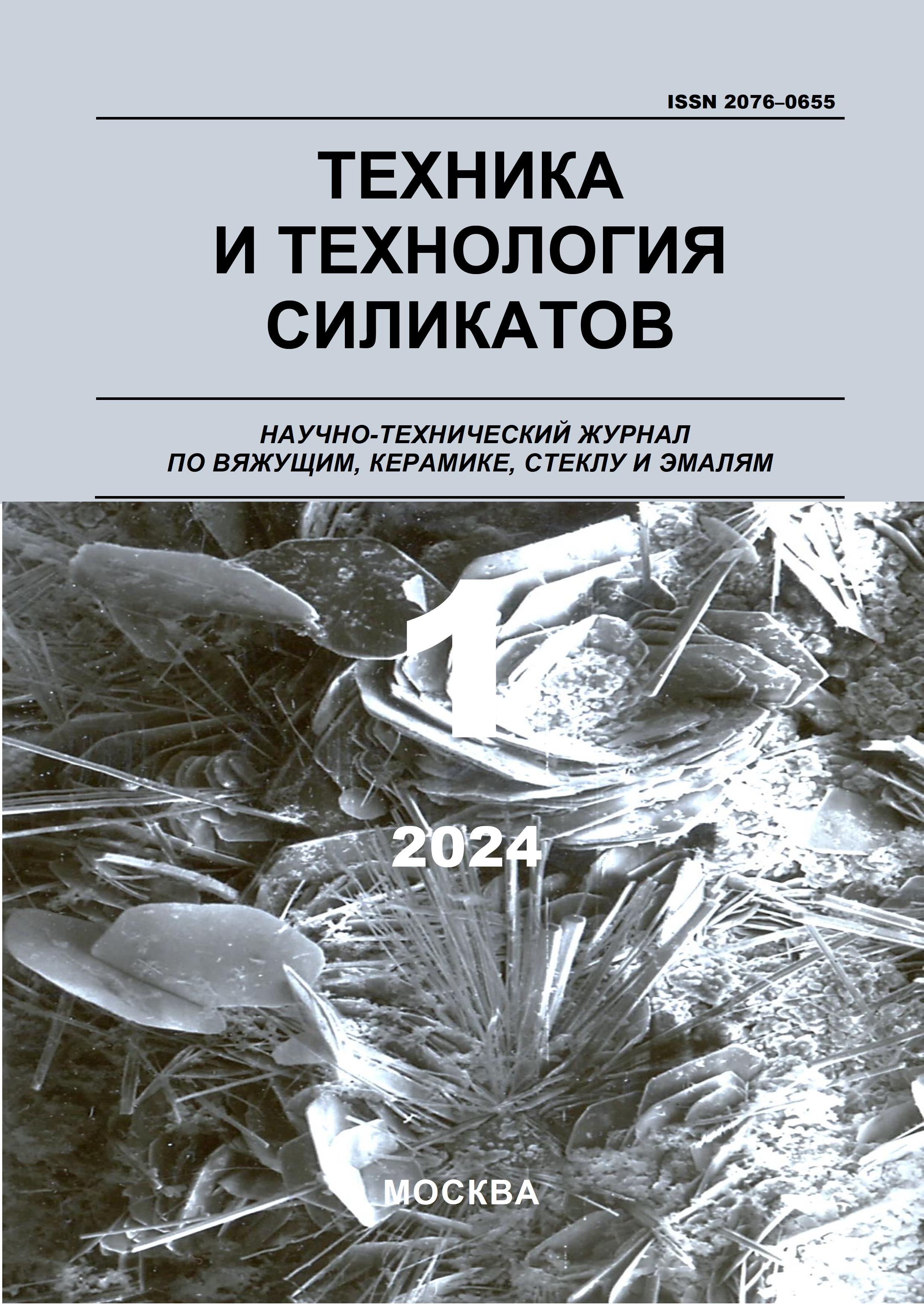Russian Federation
Russian Federation
Russian Federation
Russian Federation
Russian Federation
UDC 691.32
CSCSTI 67.09
Russian Classification of Professions by Education 08.06.01
Russian Library and Bibliographic Classification 38
Russian Trade and Bibliographic Classification 6
The article deals with the current problem of structure formation and hardening of for 3D printable mixtures. The objects of the research are the hardening systems “cement - microcalcite - modifying additives”. Cement and microcalcite, as the main com-ponents of hardening systems, were characterized by similar dimensional and geometric features. The mass ratio of binder and filler was constant in the composition of mixtures, but the modifier type was varied. Complex additives based on nanoparticles Al2O3·SiO2, SiO2, potassium pyrophosphate were used as modifiers. X-ray method was applied to study the phase composition and microstructure of hydration products. The hardening kinetics of cement systems was evaluated according to the compression tests of samples at the age of 1, 3, 7, 14, 28, 60 and 90 days. It has been stated that the use of modifying additives with Al2O3·SiO2, SiO2 nanoparticles is effective, as they make microcalcite involved in the structure formation of hardening systems. Also, the bal-ance between hydration products in the structure is shifted towards an increase in the content of CSH-phases with the value of C/S=0.5. The highest values of compressive strength both at the initial stage of hardening (Rc = 25 MPa in 1 day) and in the long term are typical for cement systems with microcalcite modified by the additive based on nanoparticles Al2O3·SiO2 (Rc = 58 MPa in 90 days). Systems with SiO2 and potassium pyrophosphate-based modifiers are characterized by low strength at the initial stage of hardening (Rc = 2 - 10 MPa in 1 day); its values are similar in a long-term period (Rc = 40 - 45 MPa).
additive technologies, mixtures for 3D printing, fillers, structure formation, strength
1. Saruhan V., Keskinateş M. and Felekoğlu B. A comprehensive review on fresh state rheological properties of extrusion mortars designed for 3D printing applications. Construction and Build-ing Materials. – 2022. Vol. 337. 127629.
2. Kalashnikov V.I. Terminologiya nauki o betone novogo pokoleniya betonov // Stroitel'nye materialy – 2011, №3 – S. 103–106.
3. Tao Y., Lesage K., Van Tittelboom K., Yuan Y. and De Schut-ter G. Effect of limestone powder substitution on fresh and hard-ened properties of 3D printable mortar. In Second RILEM Inter-national Conference on Concrete and Digital Fabrication: Digital Concrete. – 2020. Vol. 2. Pp. 135–143.
4. Paul S.C., Tay Y.W.D., Panda B. et al. Fresh and hardened properties of 3D printable cementitious materials for building and construction. Archives of civil and mechanical engineering. – 2018. Vol. 18. Pp. 311–319.
5. Manikandan K., Wi K., Zhang X. et al. Characterizing cement mixtures for concrete 3D printing. Manufacturing Letters. – 2020. Vol. 24. Pp. 33–37.
6. Lee H., Kim J.HJ., Moon J.H., Kim W.W. and Seo E.A. Evalua-tion of the Mechanical Properties of a 3D-Printed Mortar. Mate-rials. – 2019. Vol. 12 (24). 4104.
7. Rahul A.V., Santhanam M., Meena H. and Ghani Z. 3D printa-ble concrete: Mixture design and test methods. Cement and Con-crete Composites. – 2019. Vol. 97. Pp.13–23.
8. Ma G., Li Z., Wang L., Wang F. and Sanjayan J. Mechanical anisotropy of aligned fiber reinforced composite for extrusion-based 3D printing. Construction and Building Materials. – 2019. Vol. 202. Pp. 770–783.
9. Rahul A.V. and Santhanam M. Evaluating the printability of concretes containing lightweight coarse aggregates. Cement and Concrete Composites. – 2020. Vol. 109. 103570.
10. Manikandan K., Wi K., Zhang X., Wang K., and Qin H. Char-acterizing cement mixtures for concrete 3D printing. Manufac-turing Letters. – 2020. Vol. 24. Pp. 33–37.
11. Kazemian A., Yuan X., Cochran E., and Khoshnevis B. Ce-mentitious materials for construction-scale 3D printing: Labora-tory testing of fresh printing mixture. Construction and Build-ing Materials. – 2017. Vol. 145. Pp. 639–647.
12. Arunothayan R., Nematollahi B., Bong S. H., Ranade R. and Sanjayan J. Hardened properties of 3d printable ultra-high-performance fiber-reinforced concrete for digital construction applications. In Rheology and Processing of Construction Mate-rials: RheoCon2 & SCC9 – 2020. Vol. 2. Pp. 355-362.
13. Zhang Y., Zhang Y., She W., Yang L., Liu G. and Yang Y. Rheological and harden properties of the high-thixotropy 3D printing concrete. Construction and Building Materials. – 2019. Vol. 201. Pp. 278–285.
14. Sheynfel'd A.V. Nauchnye osnovy modificirovaniya betonov kompleksnymi organomineral'nymi dobavkami na osnove tehnogennyh puccolanov i poverhnostno-aktivnyh veschestv: avtoreferat dis. doktora tehnicheskih nauk: 05.23.05 – Moskva, 2015. – 40 s.
15. Kaprielov S., Sheinfeld A. Influence of silica fume/fly ash/superplasticizer combinations in powder-like complex modifiers on cement paste porosity and concrete properties / V sbornike: American Concrete Institute, ACI Special Publication. 6. Ser. "6th CanMET/ACI Conference on Superplasticizers and Other Chemical Admixtures in Concrete". – 2000. – S. 383–400.
16. Slavcheva G.S., Artamonova O.V., Babenko D.S., Shvedova M.A. Issledovanie vliyaniya modifikatorov vyazkosti na strukturoobrazovanie i tverdenie cementnyh kompozitov dlya 3D-pechati // Kondensirovannye sredy i mezhfaznye granicy – 2023, – T. 25, №1 – S. 112–124.
17. Slavcheva G.S., Artamonova O.V., Shvedova M.A., Britvina E.A. Effect of Viscosity Modifiers on Structure Formation in Cement Systems for Construction 3D Printing. Inorganic Materials. – 2021. Vol. 57. Pp. 94–100.
18. Slavcheva G.S., Solonina V.A., Panchenko Yu.F., Orlov V.S., Filipenko P.V. Mikrozernistye smesi dlya stroitel'noy 3d-pechati na osnove alevropelita // Izvestiya vuzov. Stroitel'stvo – 2023, № 12 – S.37–51.
19. Shpynova L.G. Chih V.I., Sanickiy M.A. i dr.. Fiziko-himicheskie osnovy formirovaniya struktury cementnogo kamnya. – L'vov: Vischa shkola. – 1981. 156 s.
20. Kuznecov V.A., Lobachev A.N., Bakshutov V.S. Gidrosilikaty kal'ciya. Sintez monokristallov i kristallohimiya. – M.: Nauka. 1979. – 184 s.









